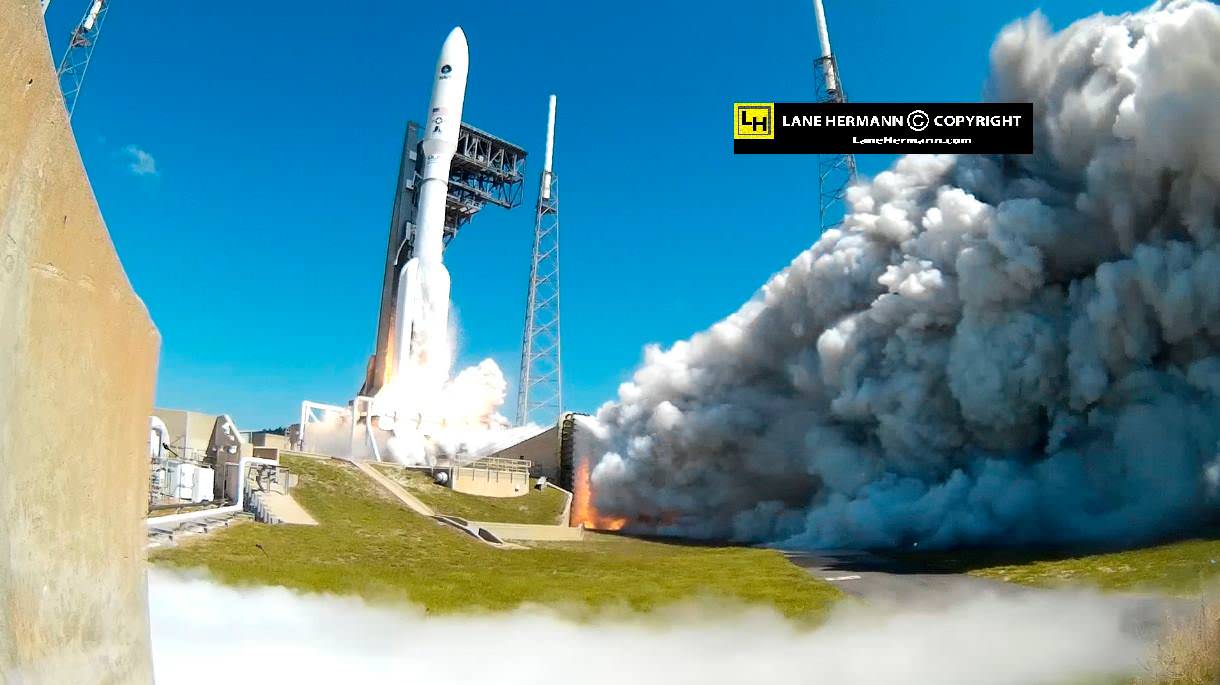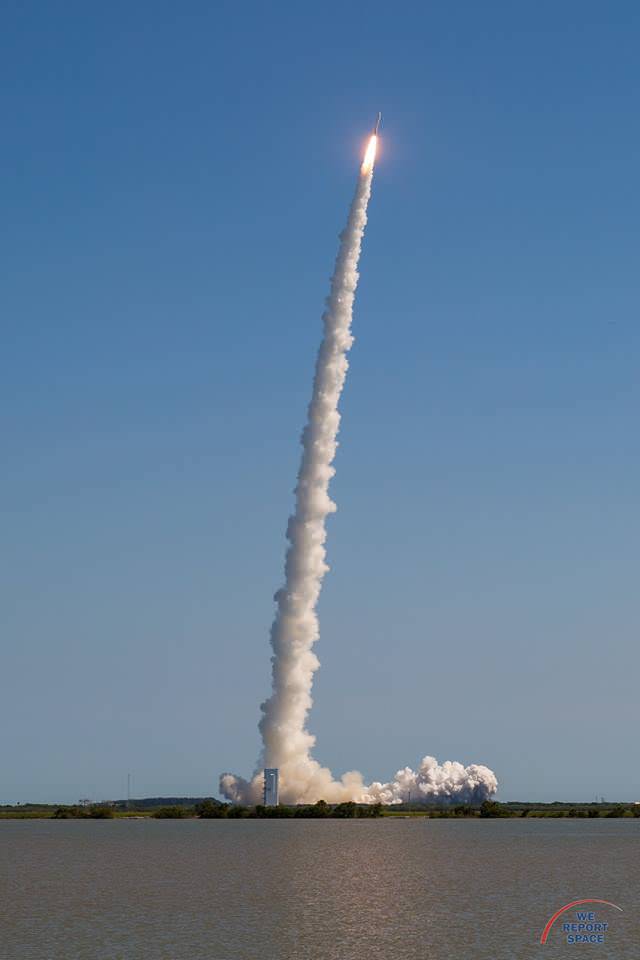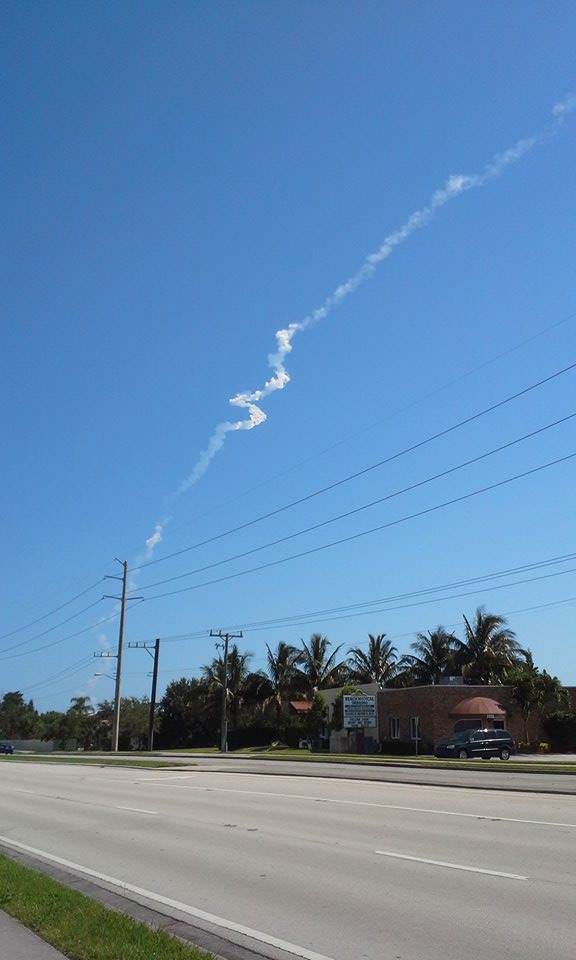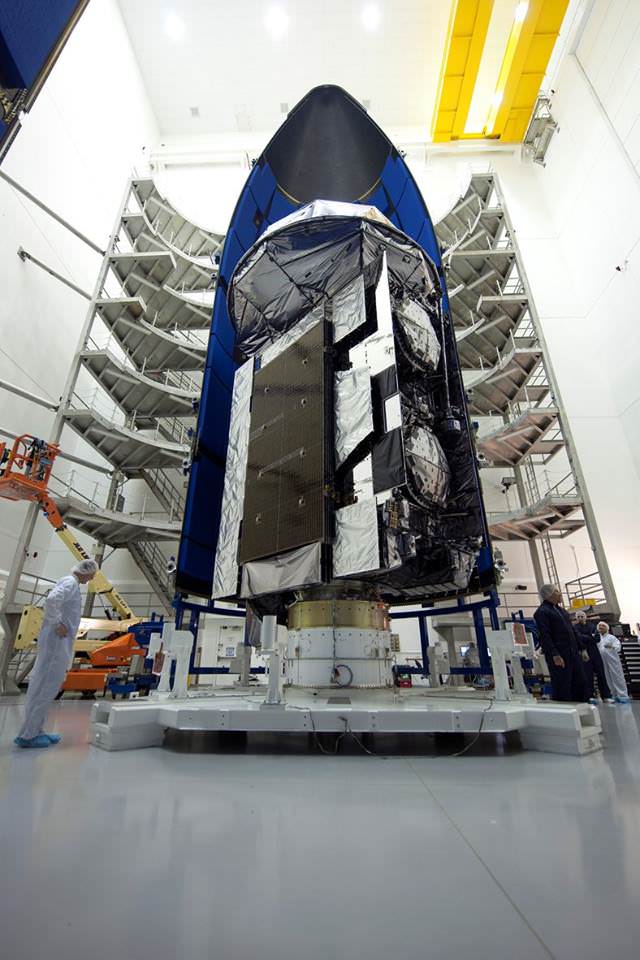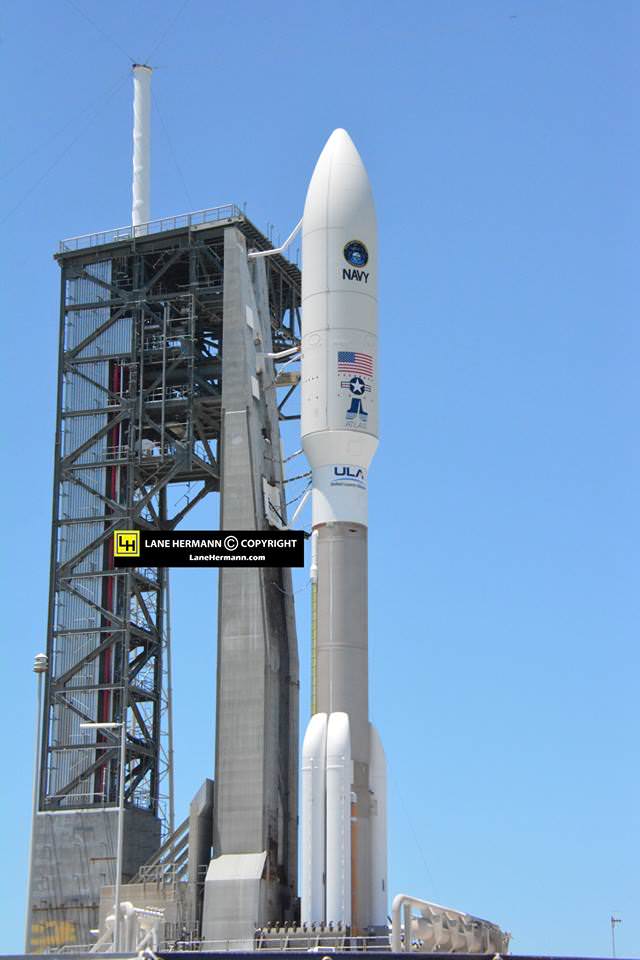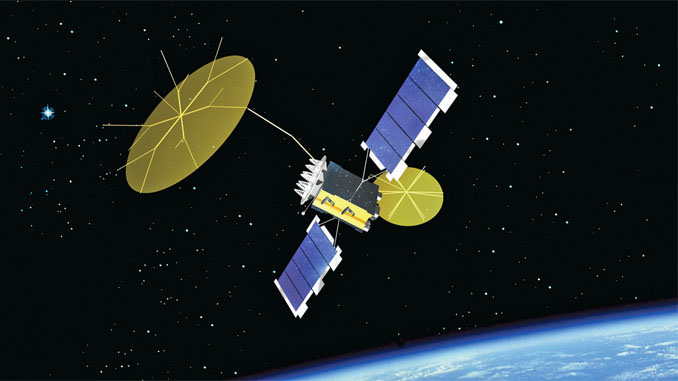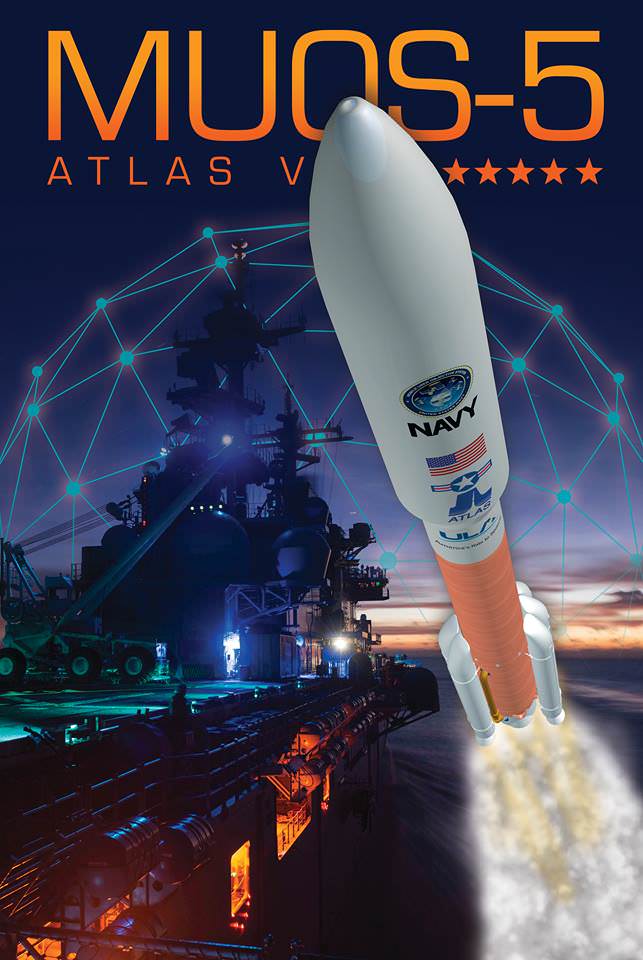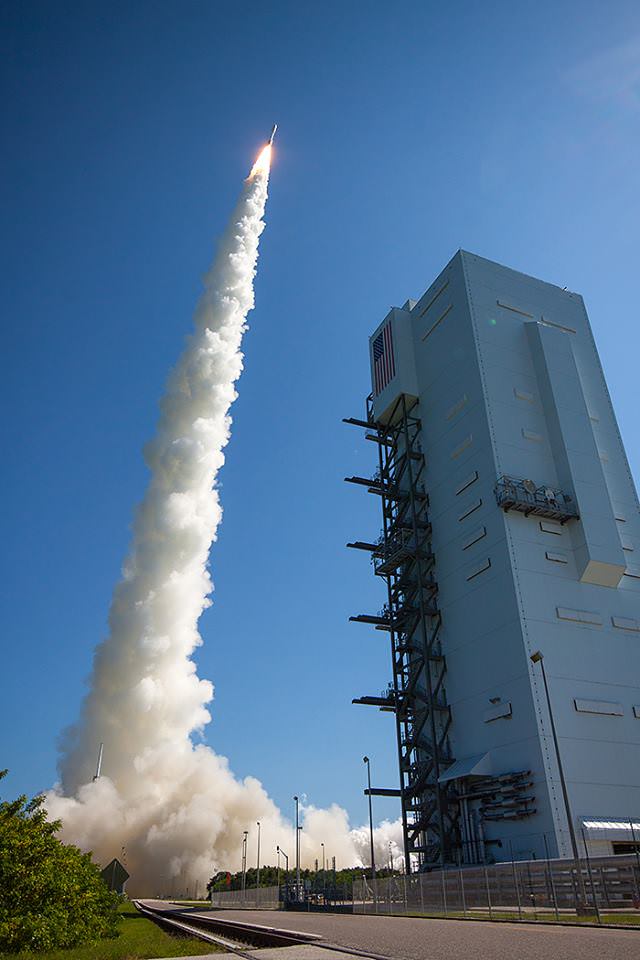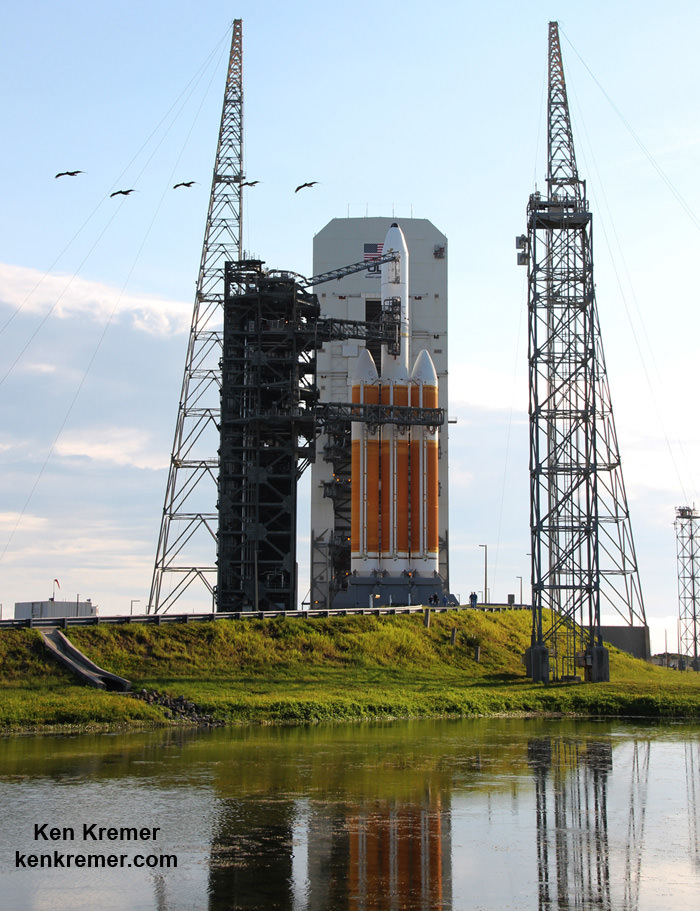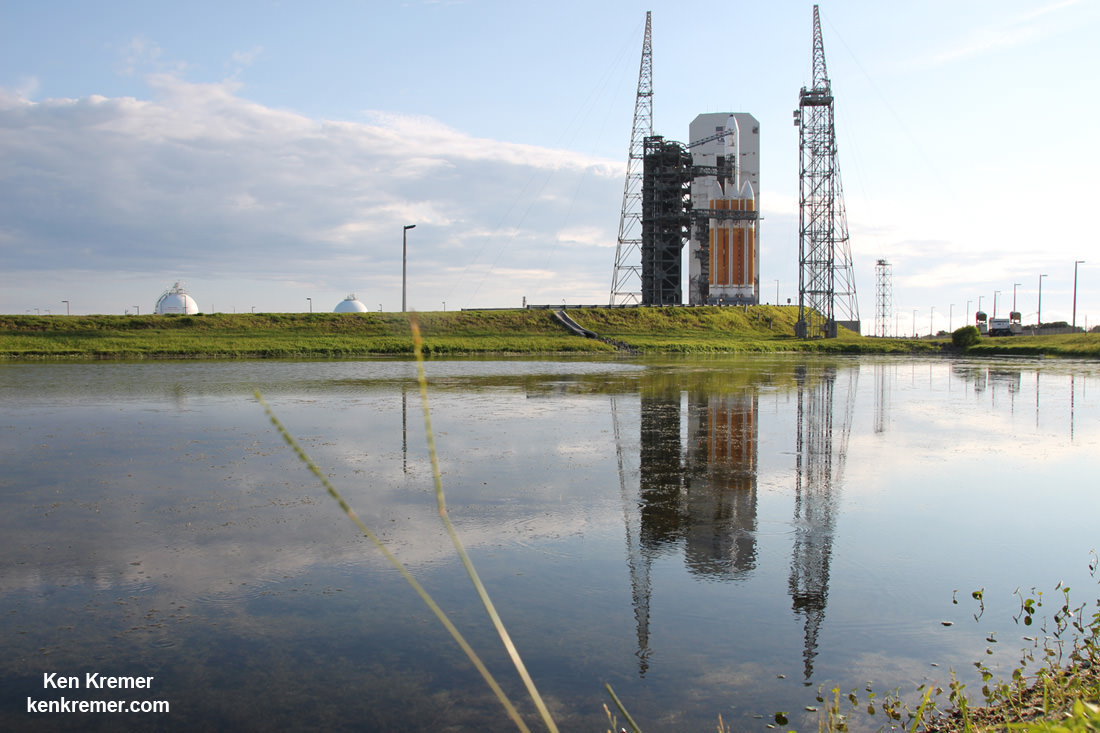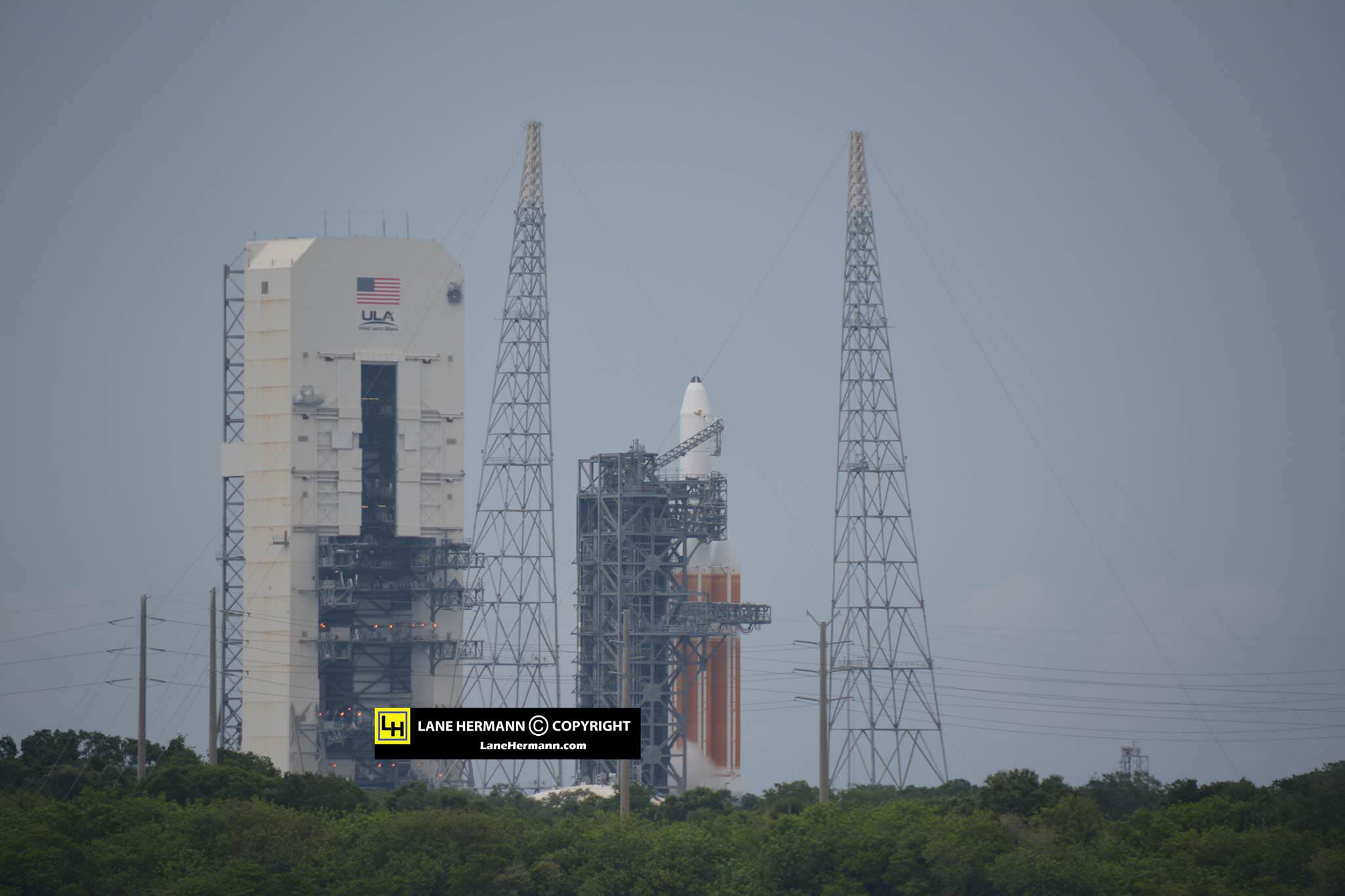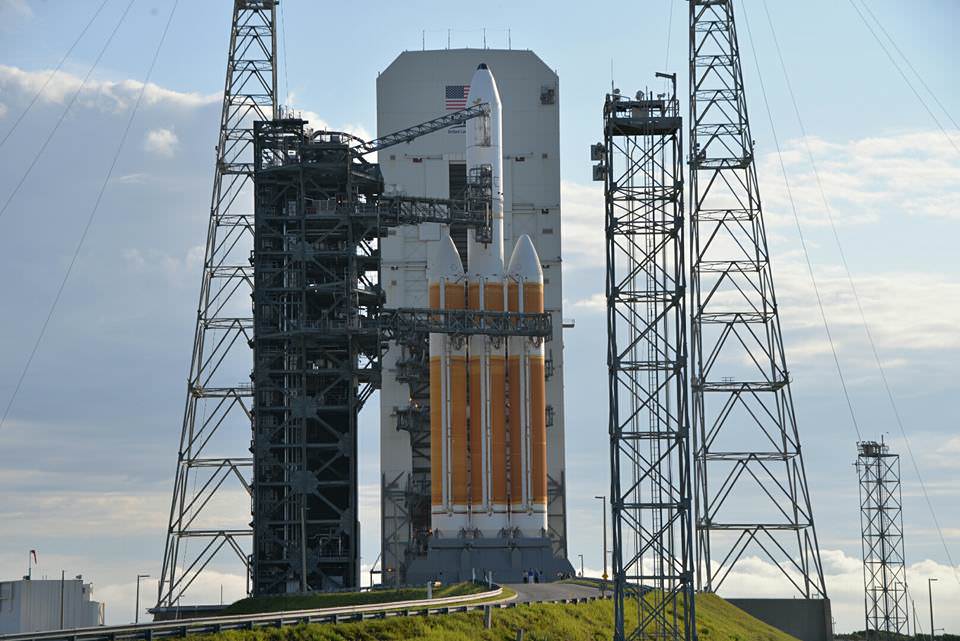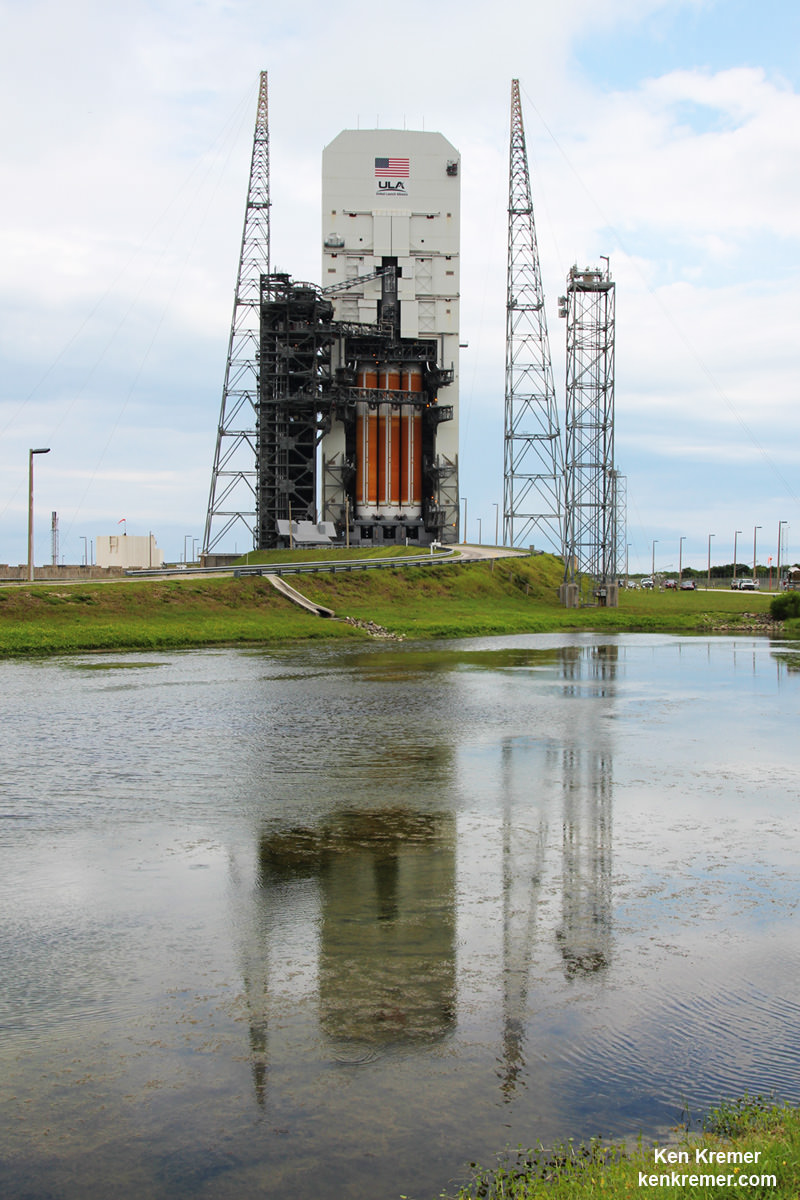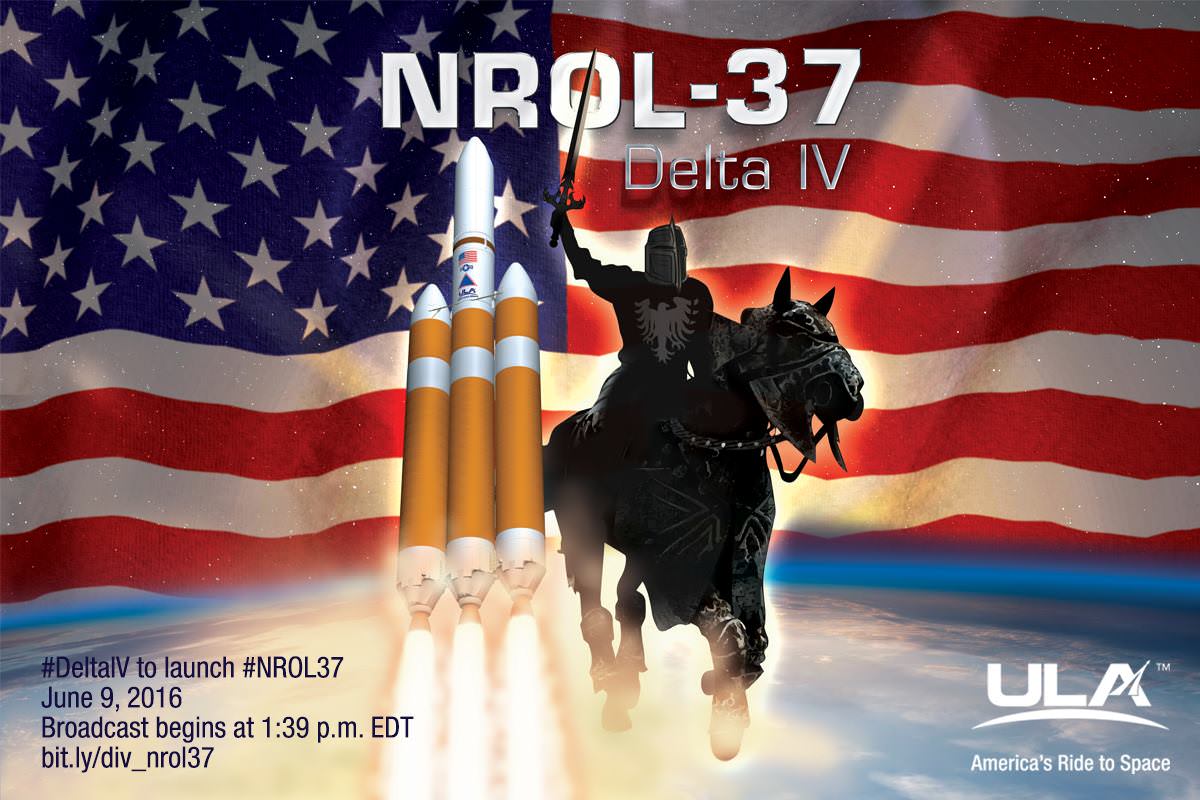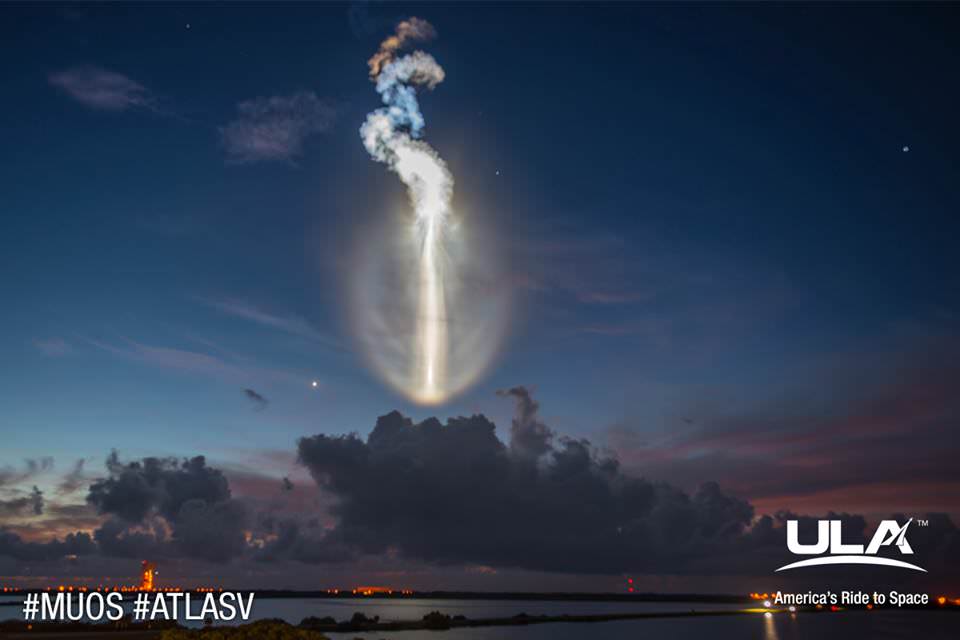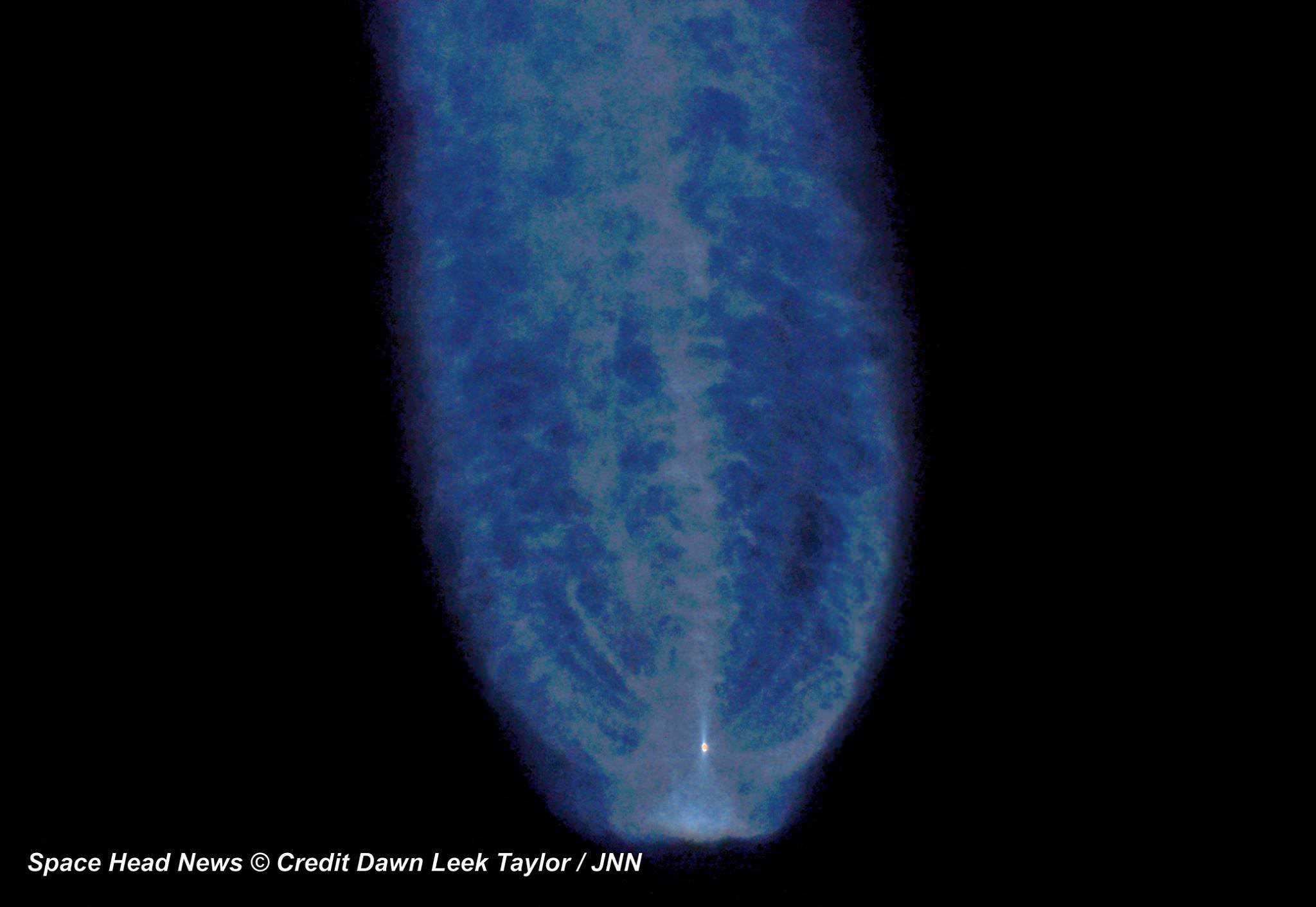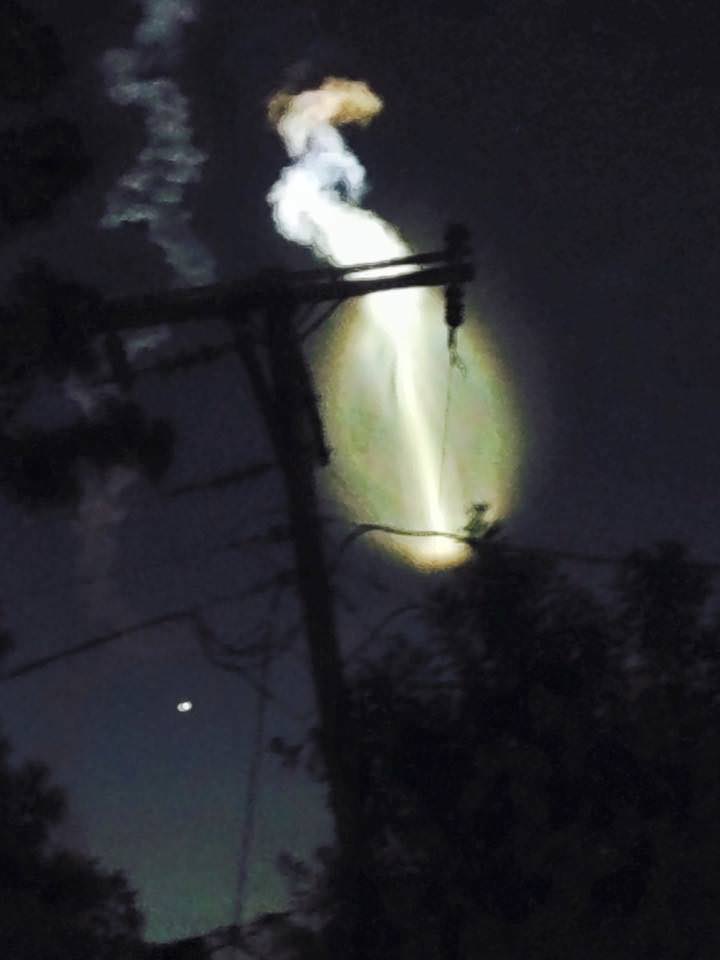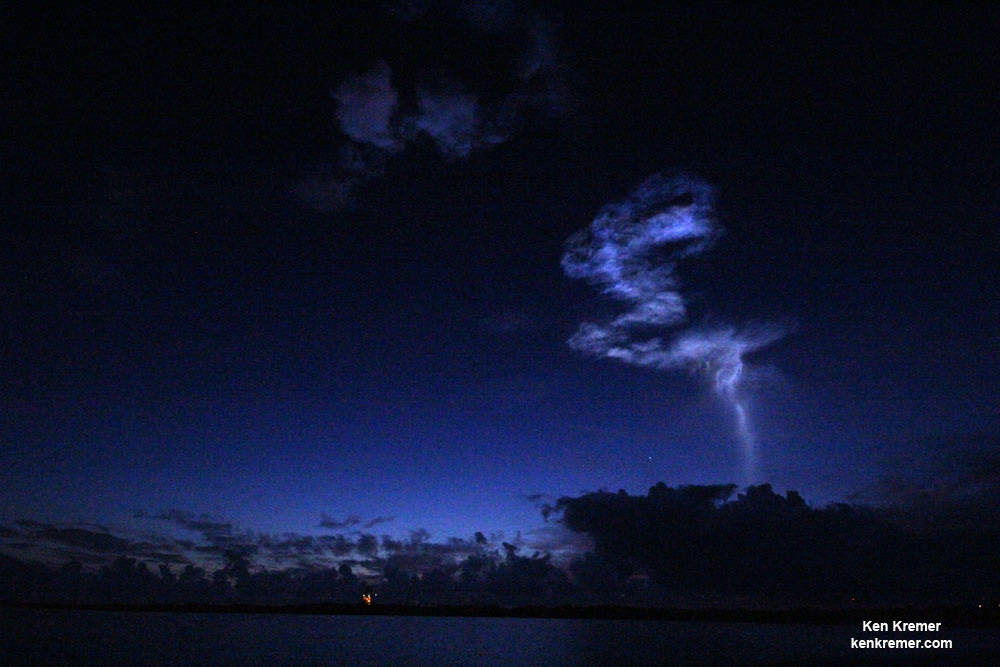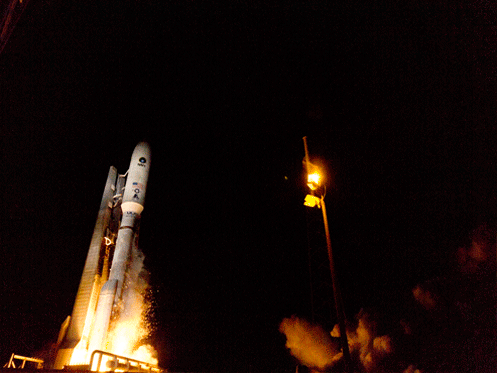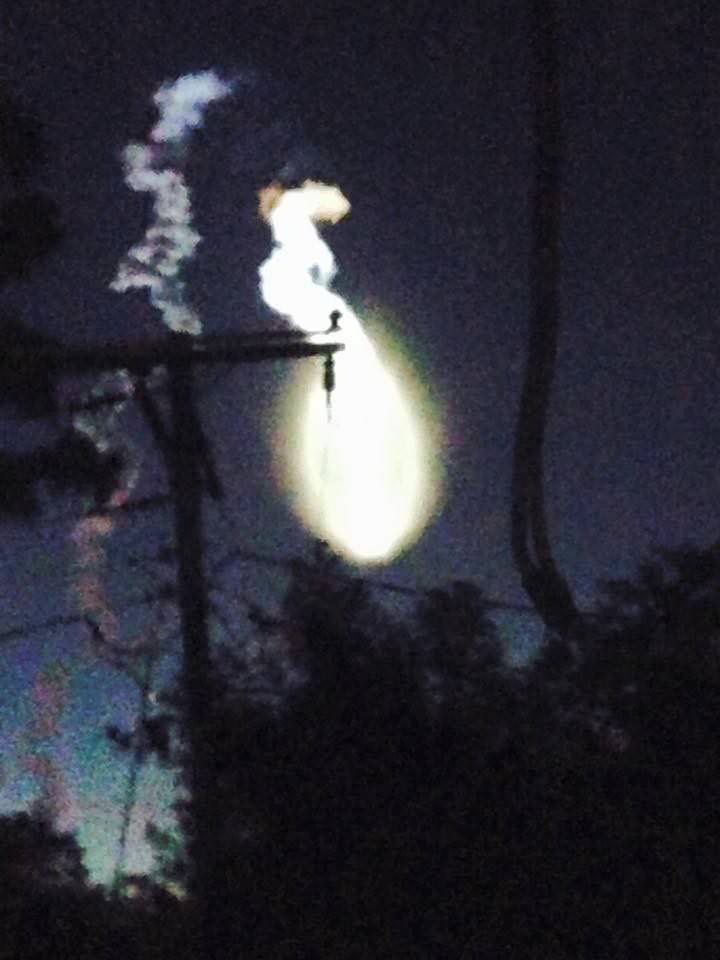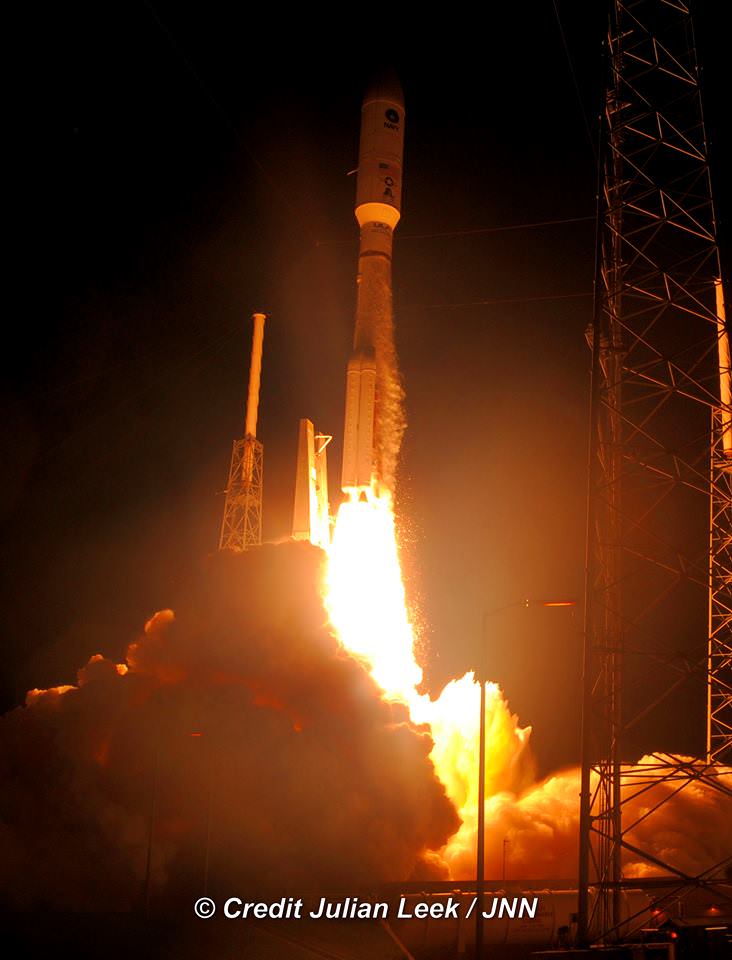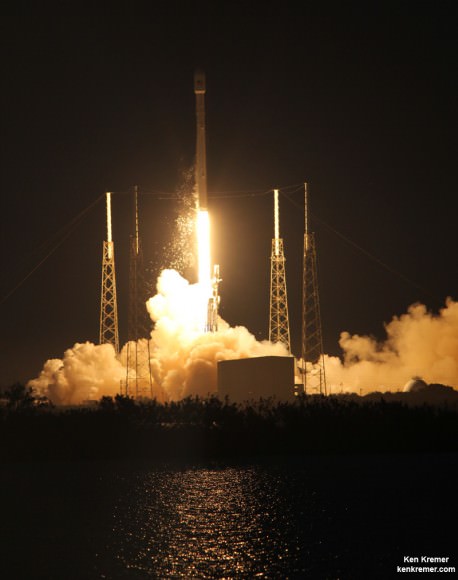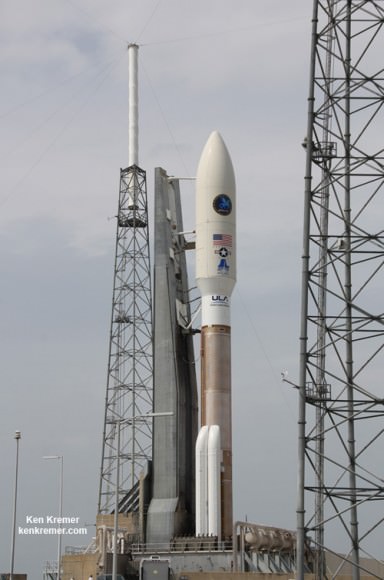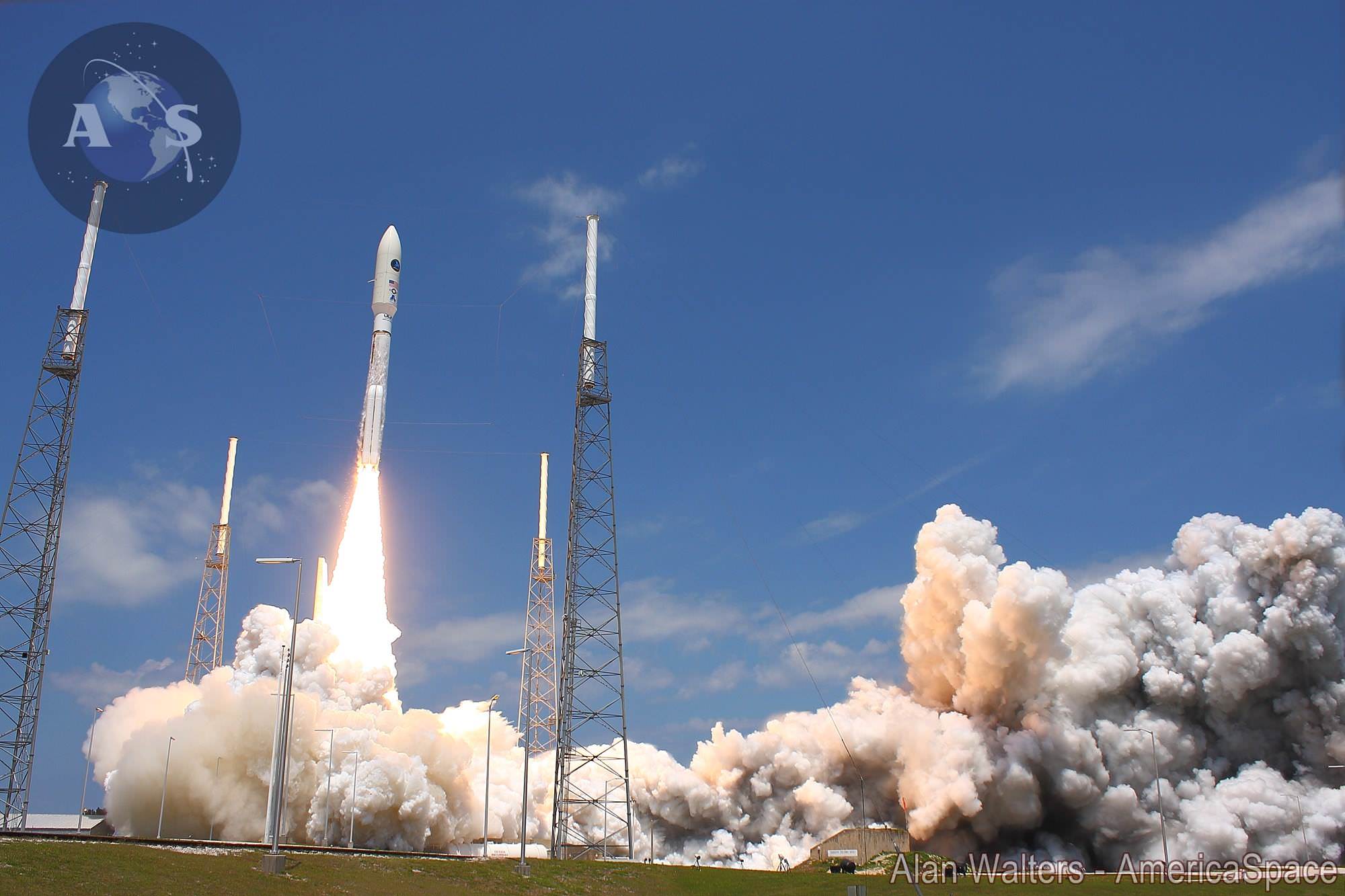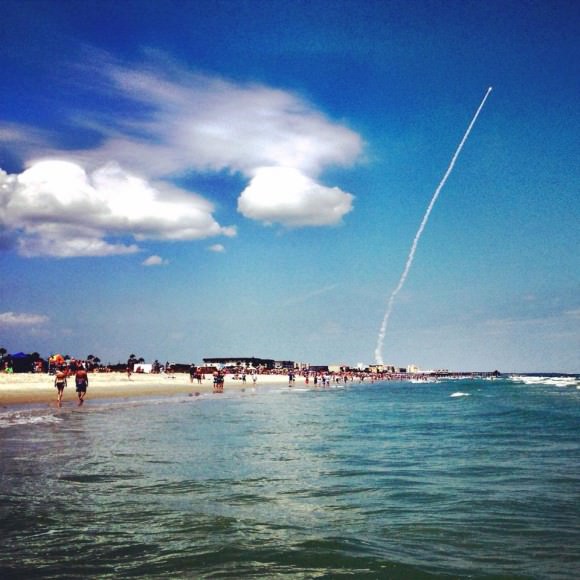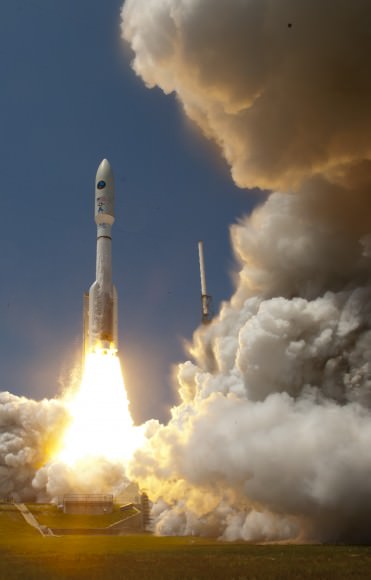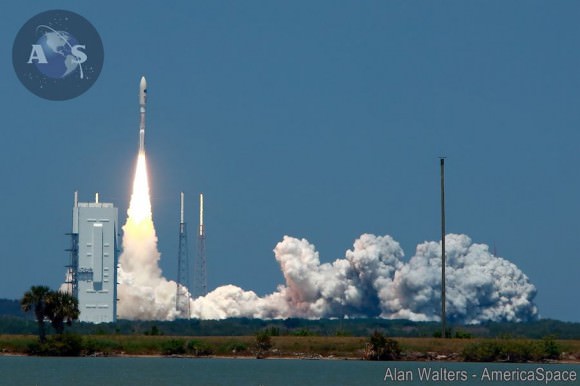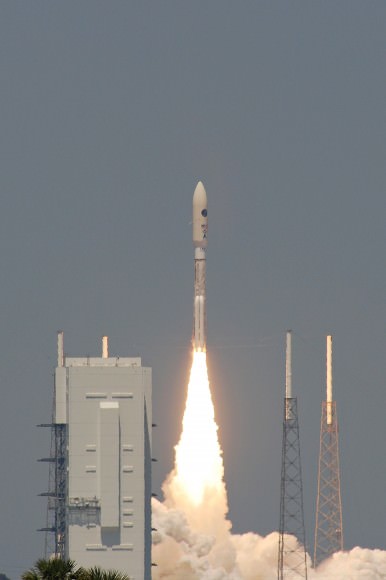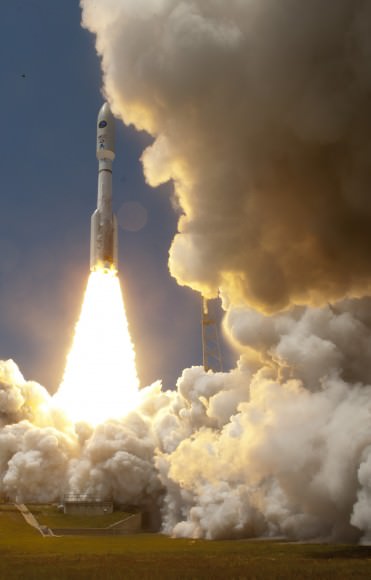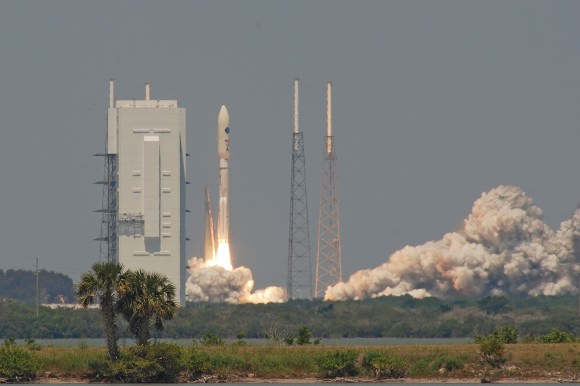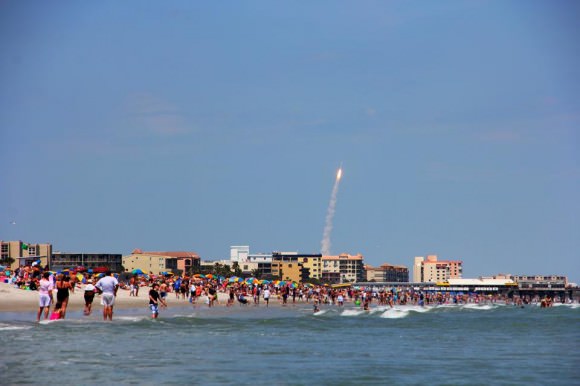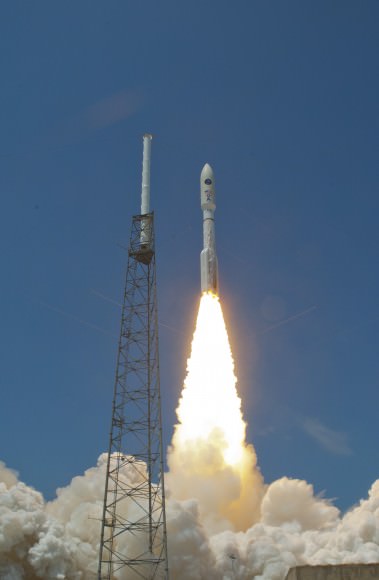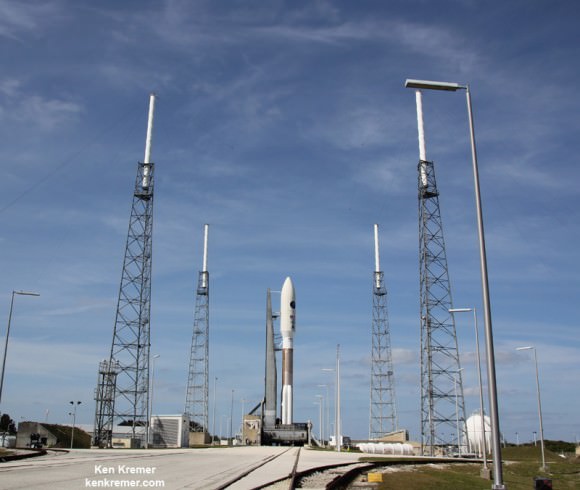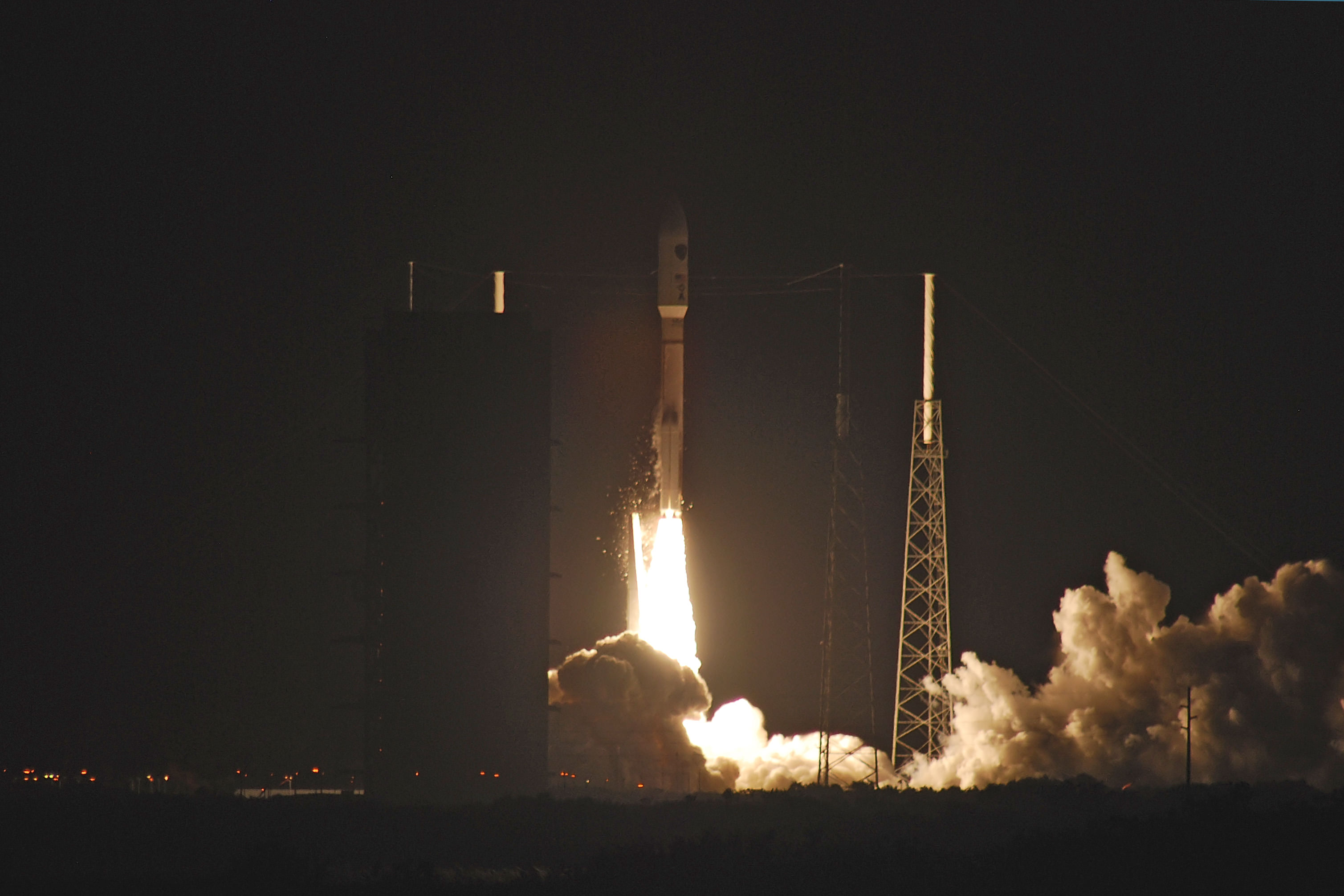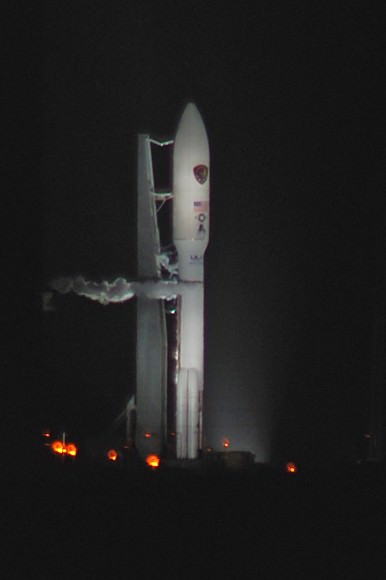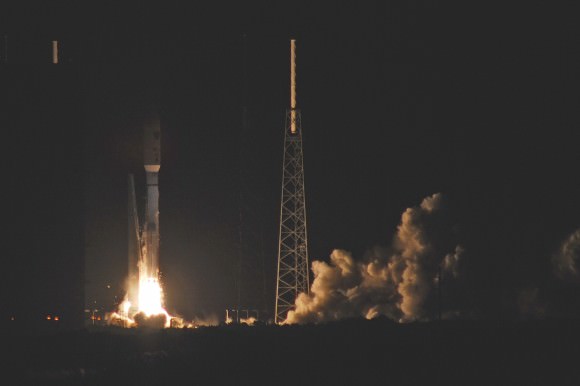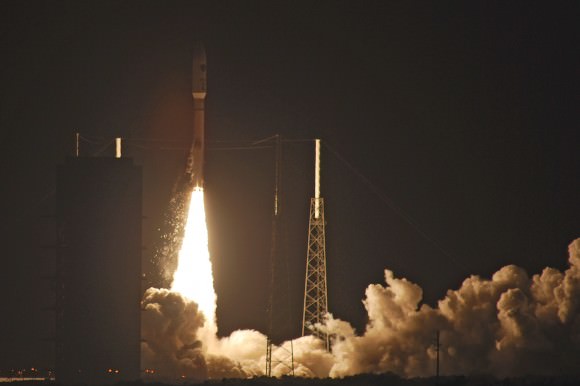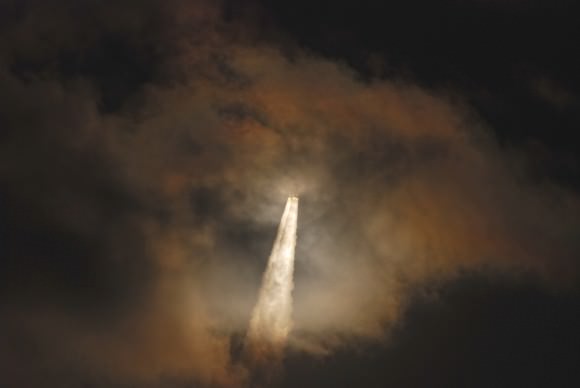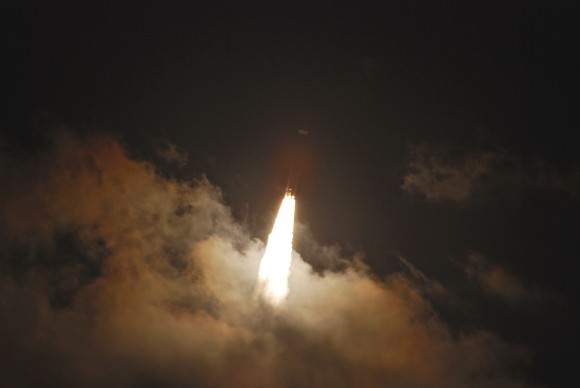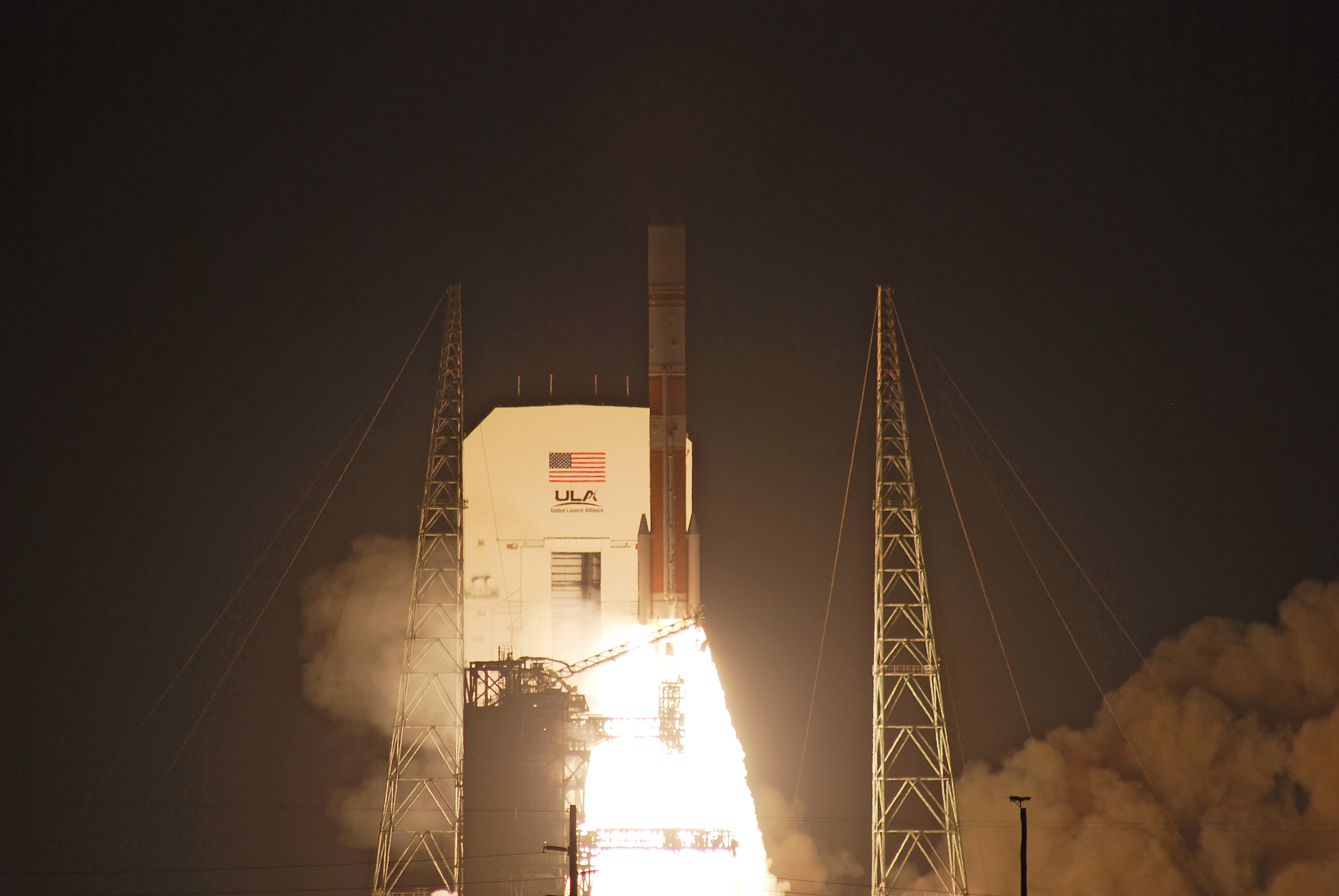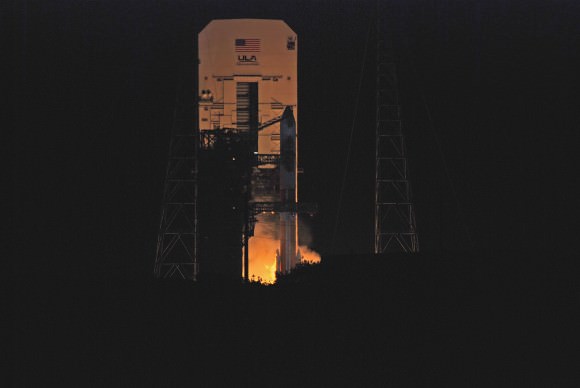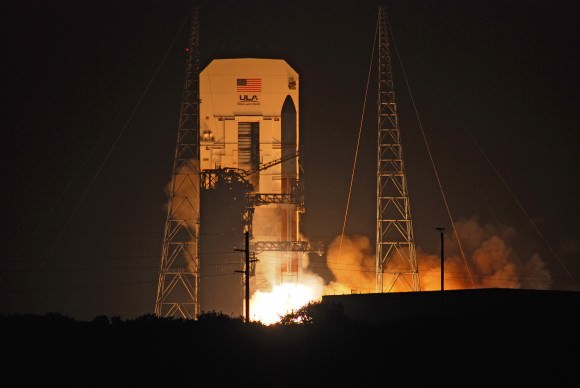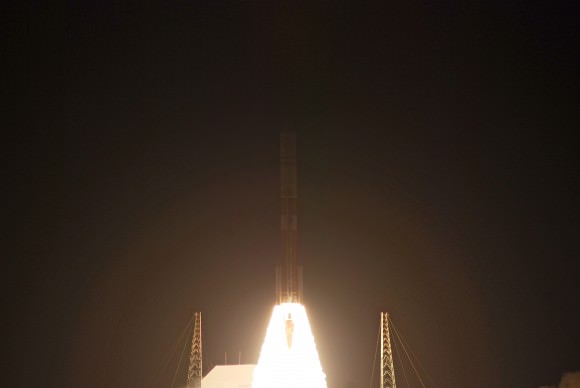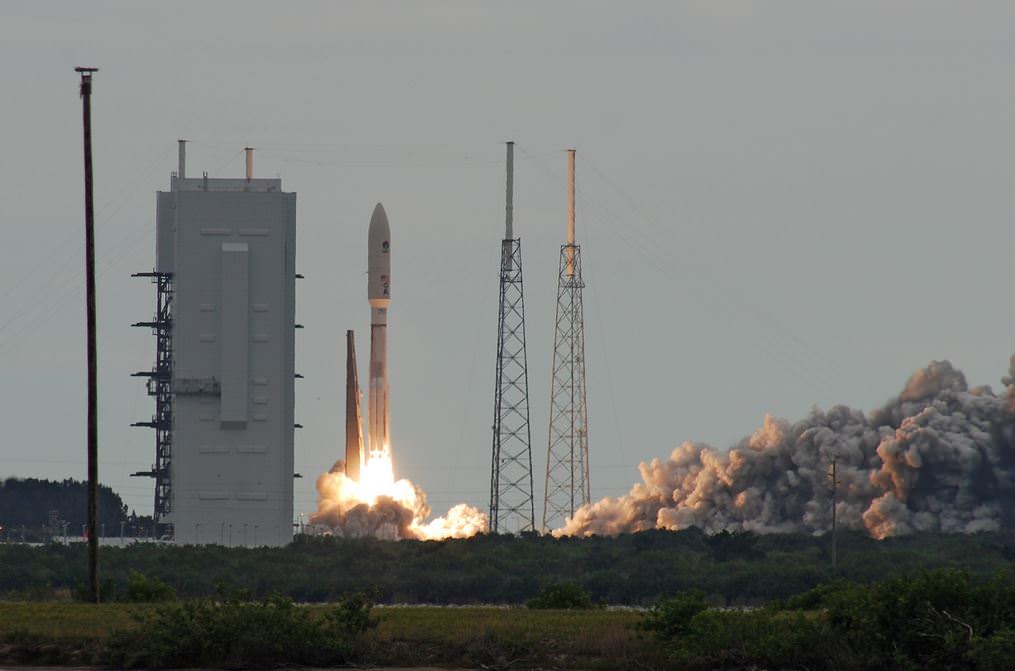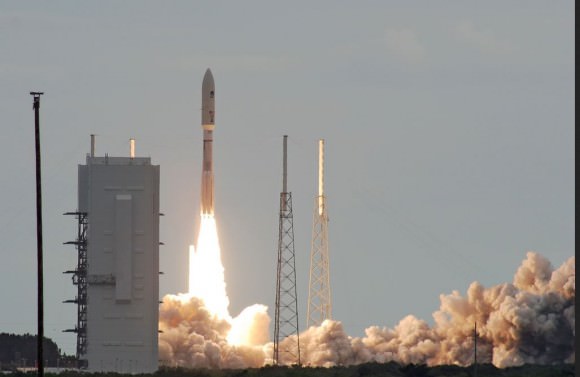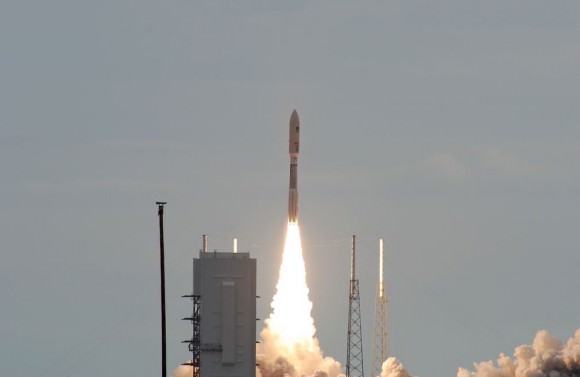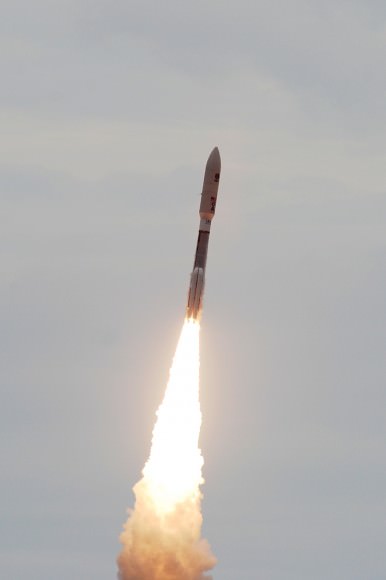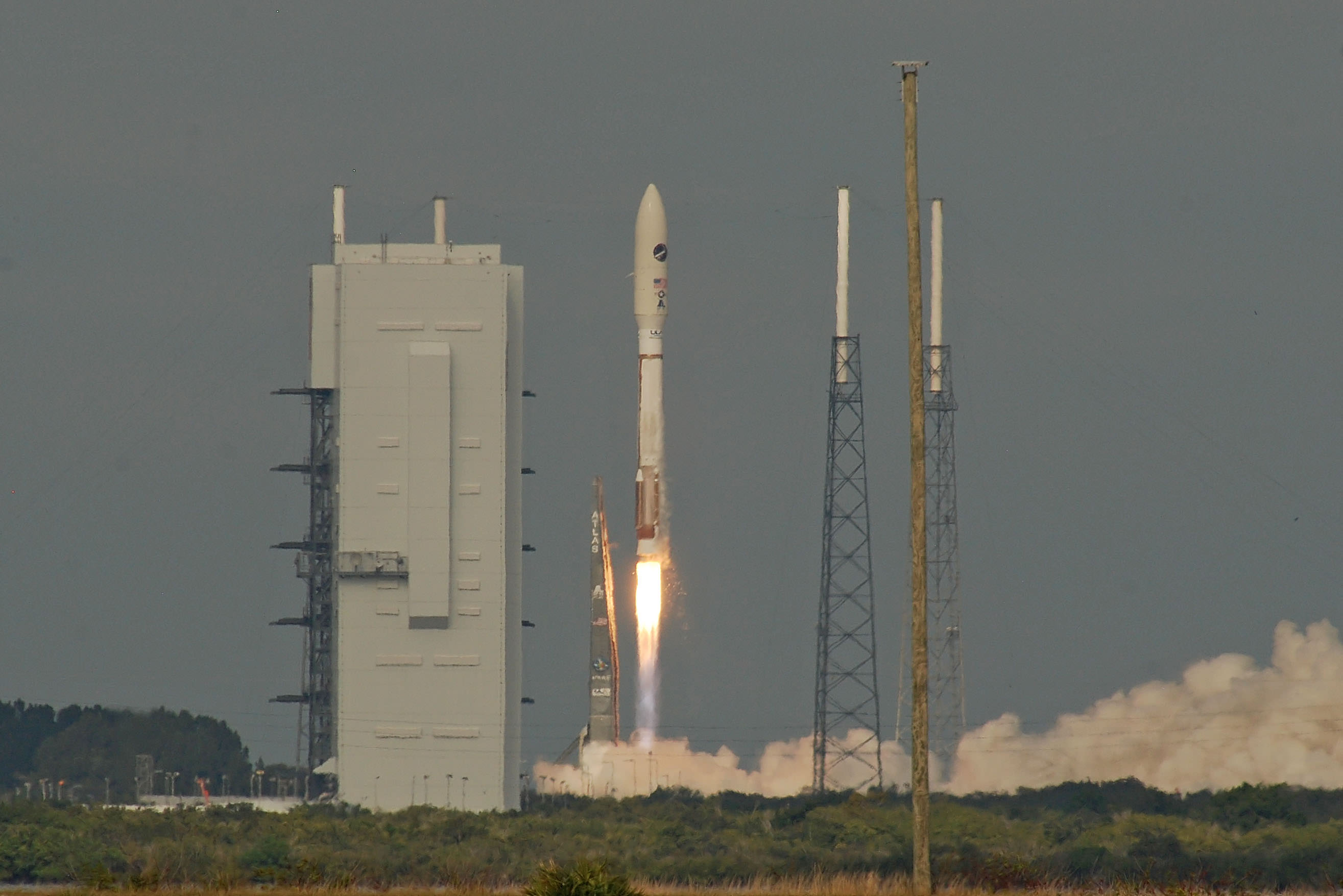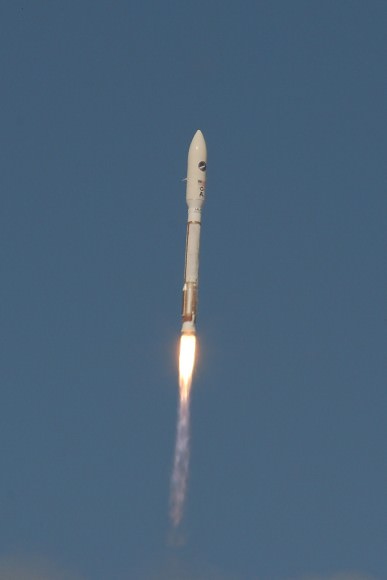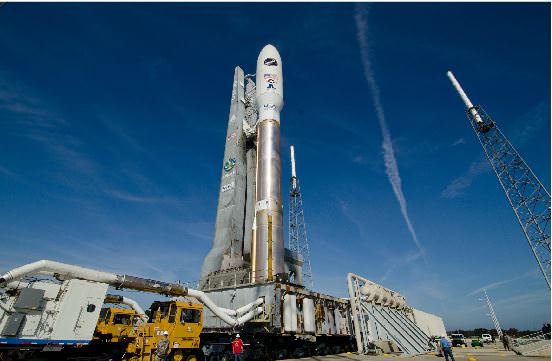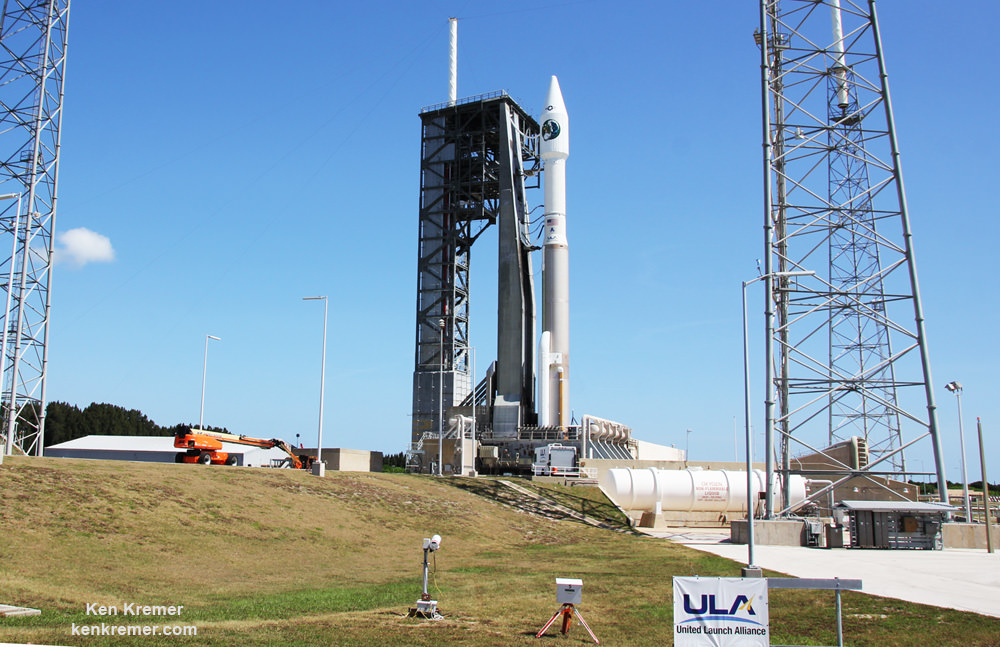
CAPE CANAVERAL AIR FORCE STATION, FL — The nation’s newest surveillance satellite is all set for a brilliant breakfast blastoff on Thursday July 28 atop a powerful Atlas V rocket from the Florida Space Coast – and both the booster and weather are in excellent shape at this time!
The goal is carry the top secret NROL-61 mission for the National Reconnaissance Office (NRO) to an undisclosed orbit which in support of US national defense and vital to US national security.
The NROL-61 mission is set to lift off on a United Launch Alliance (ULA) Atlas V rocket on Thursday morning July 28 from Space Launch Comple-41 at Cape Canaveral Air Force Station in Florida.
In an uncommon move, ULA and the military have announced the launch time is 8:37 a.m. EDT.
Virtually everything about the clandestine payload, its mission, purpose and goals are classified top secret.
The NRO is the government agency that runs a vast fleet of powerful orbital assets hosting a multitude of the most advanced, wide ranging and top secret capabilities.
The most recent NRO payload, known as NROL 37, was just launched by ULA last month on their Delta IV Heavy – the most powerful rocket in the world on June 11 – read my story here.
The excitement is building with the launch just a day away and visitors are checking into local area hotels hoping for a magnificent show from the venerable Atlas rocket with a perfect record of launch performance.
ULA managers completed the Launch Readiness Review and everything “is on track for launch.”
So you can now plan your day and watch Thursday’s launch live via a ULA broadcast which starts 20 minutes prior to the given launch time at 8:17 a.m. EDT.
Webcast links: http://bit.ly/nrol61
Or: www.youtube.com/unitedlaunchalliance
Better yet if you are free and mobile you can watch this truly impressive feat with your own eyes by making your way to the many excellent viewing locations surrounding Cape Canaveral in every direction.
Here’s the rather cool ULA mission art with a webcast link.
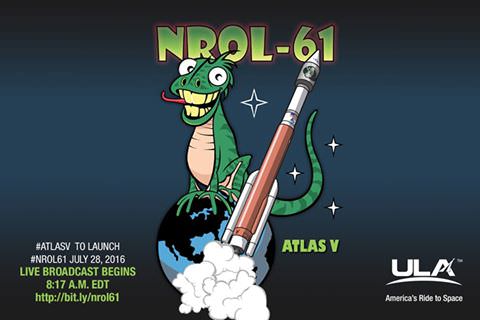
The NROL-61 patch depicts a green lizard, Spike, riding an Atlas V launch vehicle from the Cape Canaveral AFS. Spike was chosen as the mission mascot.
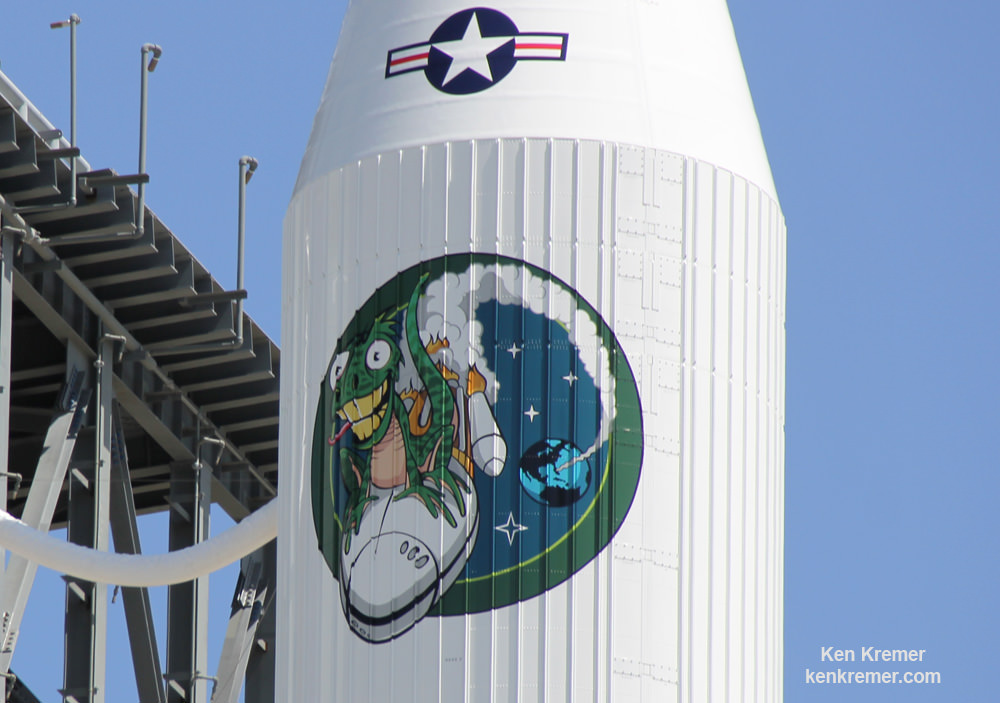
The Florida weather outlook is looking quite promising at this time rather favorable. Air Force meteorologists are predicting an 80 percent chance of ‘GO’ with favorable weather conditions for Thursdays breakfast time blastoff.
The primary weather concern is for Cumulus Clouds.
In the event of a scrub delay for any reason, a backup launch opportunity exists on Friday, July 29. The weather odds are the same at 80% GO!
The rocket should put on a spectacular sky show since it is equipped with a pair of powerful solid rocket boosters spewing fire and an expanding plume of smoke and ash as is soars to orbit!
The Atlas rocket and payload were rolled put to launch pad 41 as planned Tuesday morning, July 26 – for a distance of about 1800 feet from the Vertical Integration Facility (VIF) where the rocket and payload were assembled, out to the pad.
It is now visibly erect at the pad from a number of viewing locations including Titusville and Playalinda Beach – positioned in between four lightning masts for protection from lightening.
Here’s a detailed mission profile video describing the launch events:
The NROL-61 mission counts as ULA’s sixth launch of 2016 and the 109th overall since the company was founded in 2006.
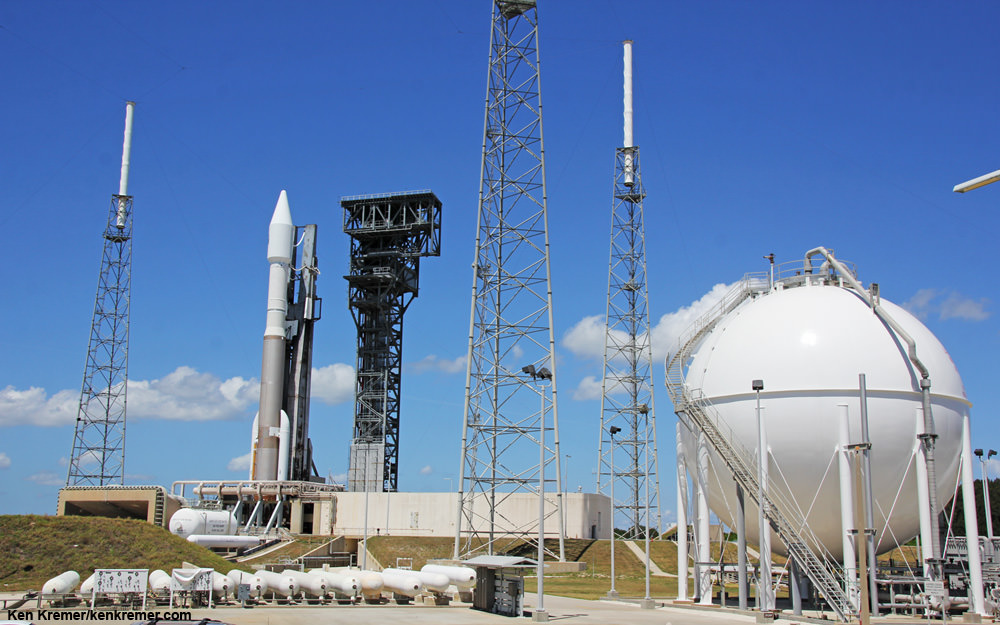
The 20 story tall Atlas V will launch in its 421 configuration – the same as what will be used for manned launches with the crewed Boeing ‘Starliner’ space taxi carrying astronaut crews to the International Space Station.
This will be the sixth Atlas V to launch in the 421 configuration.
The Atlas 421 vehicle includes a 4-meter diameter payload fairing and two solid rocket boosters that augment the first stage. The Atlas booster for this mission was powered by the RD AMROSS RD-180 engine and the Centaur upper stage was powered by the Aerojet Rocketdyne RL10C-1 engine.
The RD-180 burns RP-1 (Rocket Propellant-1 or highly purified kerosene) and liquid oxygen and delivers 860,200 lb of thrust at sea level.
The strap on solids deliver approximately 500,000 pounds of thrust.
The solids will be jettisoned about 2 minutes after liftoff
The possible roles for the reconnaissance payload include signals intelligence, eavesdropping, imaging and spectroscopic observations, early missile warnings and much more.
The NRO was formed in response to the Soviet launch of Sputnik and secretly created on September 6, 1961.
“The purpose is overseeing all satellite and overflight reconnaissance projects whether overt or covert. The existence of the organization is no longer classified today, but we’re still pressing to perform the functions necessary to keep American citizens safe,” according to the official NRO website.
Watch for Ken’s continuing on site reports direct from Cape Canaveral Air Force Station, the Kennedy Space Center and the ULA Atlas launch pad.
Stay tuned here for Ken’s continuing Earth and Planetary science and human spaceflight news.
………….
Learn more about SLS and Orion crew vehicle, SpaceX CRS-9 rocket launch, ISS, ULA Atlas and Delta rockets, Juno at Jupiter, Orbital ATK Antares & Cygnus, Boeing, Space Taxis, Mars rovers, NASA missions and more at Ken’s upcoming outreach events:
July 27-28: “ULA Atlas V NRO Spysat launch July 28, SpaceX launch to ISS on CRS-9, SLS, Orion, Juno at Jupiter, ULA Delta 4 Heavy NRO spy satellite, Commercial crew, Curiosity explores Mars, Pluto and more,” Kennedy Space Center Quality Inn, Titusville, FL, evenings


